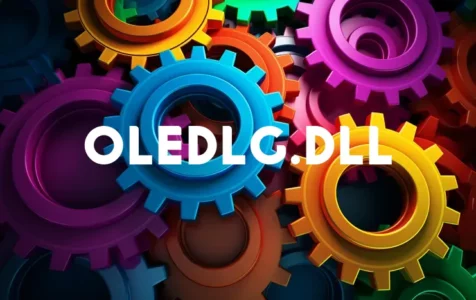The oledlg.dll file is a system file associated with the Microsoft Windows Operating System. It stands for “Object Linking and Embedding (OLE) Dialog Interface Library” and is a part of Microsoft OLE, which provides a set of object-based services that allow component-based applications to integrate smoothly. Specifically, oledlg.dll supports user interface operations in OLE, such as dialog boxes for inserting objects and linking, thus playing a crucial role in the functionality of OLE within Windows.
Is oledlg.dll Safe, and Could It Be a Virus or Malware?
The genuine oledlg.dll file provided by Microsoft is safe and is not inherently harmful to your computer system. However, since DLL files are executable, they can be exploited by malicious software. It is possible for viruses or malware to disguise themselves by using the same or a similar name to oledlg.dll. To ensure safety, you should always verify that the file is located in its correct default location and perform regular system scans with a reputable antivirus program.
Common Issues Associated with oledlg.dll
Errors related to oledlg.dll can occur due to various reasons, such as a missing DLL file after an application uninstall, a corrupt file due to a malware infection, or a conflict within the Windows Registry. Common error messages may suggest that “oledlg.dll is missing,” “oledlg.dll not found,” or there are problems launching games or applications due to oledlg.dll-related issues.
How to Fix Common oledlg.dll Issues
Here are some methods to fix problems associated with the oledlg.dll file:
Expert Tip: For smoother PC performance, consider using a PC optimization tool. It handles junk files, incorrect settings, and harmful apps. Make sure it's right for your system, and always check the EULA and Privacy Policy.
Special offer. About Outbyte, uninstall instructions, EULA, Privacy Policy.
Method 1: Restore or Replace Missing oledlg.dll File
You can manually download the oledlg.dll file from a trusted source and place it in the application or system directory. Remember to select the correct version based on your Windows version, architecture (32-bit or 64-bit), and language.
To register oledlg.dll:
1. Press `Win + R`, type “cmd”, then press `Ctrl + Shift + Enter` to run Command Prompt as administrator.
2. Type `regsvr32 oledlg.dll` and press `Enter`.
Method 2: Use System File Checker (SFC)
The SFC tool can help fix the corrupted or missing oledlg.dll file.
1. Open Command Prompt as an administrator.
2. Enter `sfc /scannow` and press `Enter`.
3. Wait for the process to complete, and follow any on-screen instructions.
Method 3: Scan for Malware
Run an antivirus scan to check for the presence of malware on your system that might be causing the oledlg.dll error.
Method 4: Update Device Drivers
Outdated or corrupt device drivers can lead to DLL file errors. You can update your drivers manually through Device Manager or automatically with a driver update tool.
Method 5: Perform System Restore
If recent changes caused issues with oledlg.dll, you could restore your system to a previous state before the problem occurred using System Restore.
Method 6: Clean Installation of Windows
As a last resort, if none of the above solutions fix the error, you may need to perform a clean install of Windows. This will erase everything and give you a fresh start with a clean copy of Windows.
Users who experience issues with the oledlg.dll file can consult community discussion forums for advice and shared experiences. While specific links are not provided, users can search for reputable tech forums or use the Microsoft community platform for more support.
It is also worth noting that while some third-party websites offer downloads for DLL files, exercising caution is paramount as these files can sometimes be sourced from unreliable vendors or be tampered with, leading to further system issues. It is recommended to seek solutions through official channels or recognized tech support services.
Remember, missteps during manual repairs can have significant impacts on your system. Should you have doubts about how to proceed, you may want to consider contacting a professional or seeking out detailed guides tailored to your specific problem and Windows version.
